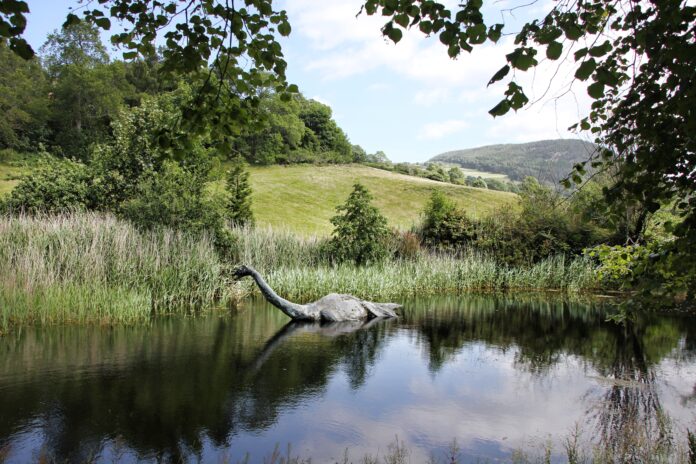The field of cryptozoology has long captivated the imagination of both scientists and enthusiasts alike. As it delves into the hidden and undiscovered creatures that are often relegated to the realm of myth and folklore. From legendary beasts like Bigfoot and the Loch Ness Monster to blood-sucking Chupacabras and winged Mothman. The world of cryptozoology is a fascinating landscape of mystery and speculation.
Cryptozoology: A Brief History
Cryptozoology can trace back its roots to ancient times when the fascination with mythological creatures was on the rise. At the same time, people were developing habits of documenting different phenomena. However, it wasn’t until the 20th century that the field began to take shape as a distinct area of study. Pioneers such as Bernard Heuvelmans and Ivan T. Sanderson paved the way for modern cryptozoological research. They have laid the groundwork for the systematic investigation of these elusive creatures.
Legendary Creatures: Fact or Fiction?
Cryptozoology is often associated with the search for legendary creatures that have captured the public’s imagination. Bigfoot, a towering humanoid creature said to inhabit forests, and the Loch Ness Monster, a prehistoric sea creature rumored to dwell in the depths of Scotland’s Loch Ness, are among the most iconic examples. However, skeptics argue that these creatures exist only in the realm of folklore and myth. Despite numerous alleged sightings and anecdotal evidence, concrete scientific proof remains elusive.
Cryptid Investigations: Techniques and Challenges
Cryptozoologists employ various techniques in their quest for cryptids. Fieldwork and data collection involved interviews with eyewitnesses, analyzing footprint casts, conducting night vigils, and setting up camera traps. Technology plays an important role in cryptozoological research, with advancements in DNA analysis, remote sensing, and underwater exploration aiding investigations. However, cryptozoologists face challenges such as skepticism from the scientific community, limited funding, and ethical considerations regarding the pursuit of these creatures.
Cryptozoology and Conservation
While some dismiss cryptozoology as a pseudoscience, others argue that it has the potential to contribute to wildlife conservation efforts. By investigating cryptids and their habitats, researchers gain insights into the delicate ecosystems that support these creatures. Conservation initiatives targeting cryptid habitats can have broader implications for the preservation of biodiversity and the protection of endangered species. However, it is essential to balance the pursuit of cryptids with ethical considerations, ensuring that these expeditions do not cause harm or disrupt natural ecosystems.
Famous Cryptozoological Cases and Discoveries
Several famous cases have left an indelible mark on cryptozoology. The Patterson-Gimlin film, capturing what appears to be a Bigfoot walking through the forest, remains one of the most controversial pieces of evidence. The Loch Ness Monster has been the subject of numerous expeditions, scientific investigations, and photographic and sonar evidence. The Chupacabra, known for its alleged livestock attacks, has sparked investigations across the Americas. While conclusive proof of these creatures remains elusive, these cases continue to fuel the curiosity and intrigue surrounding cryptozoology.
Skepticism vs. Belief: Debates in Cryptozoology
Cryptozoology has faced significant skepticism from the scientific community, which demands rigorous evidence and adherence to the scientific method. Skeptics argue that the field lacks a solid foundation in empirical data and relies heavily on anecdotal accounts. However, believers argue that skepticism should not hinder the exploration of unknown phenomena and that an open-minded approach is necessary to uncover discoveries. The clash between skepticism and belief creates a dynamic tension within the cryptozoological community.
The Future of Cryptozoology
The future of cryptozoology holds exciting possibilities. Advancements in technology, such as drones, advanced DNA analysis, and satellite imagery, present new avenues for research and exploration. Collaborations between mainstream science and cryptozoology could bridge the gap between skepticism and belief, promoting a more systematic and rigorous approach to the study of cryptids. As long as the spirit of curiosity and exploration persists, the search for answers and the pursuit of discoveries in the field of cryptozoology will continue.
Conclusion
The curious world of cryptozoology invites us to explore the unknown and challenge our understanding of the natural world. While the existence of legendary creatures remains unproven, cryptozoology offers a unique lens through which we can investigate mysteries and engage in scientific discourse. By embracing open-mindedness and collaboration, we can unlock the secrets of our world and perhaps uncover new and extraordinary creatures that defy our current understanding. The allure of mythical and elusive creatures will forever capture our imagination and drive us to explore the uncharted territories of cryptozoology.
And as always folks if you are interested in reading some of the latest articles in Hindi be sure to check out the Mojo Patrakar. Also, if you liked this article then check out similar interesting articles such as The Secrets of Lucid Dreaming: Exploring Conscious Awareness in the Dream World.



